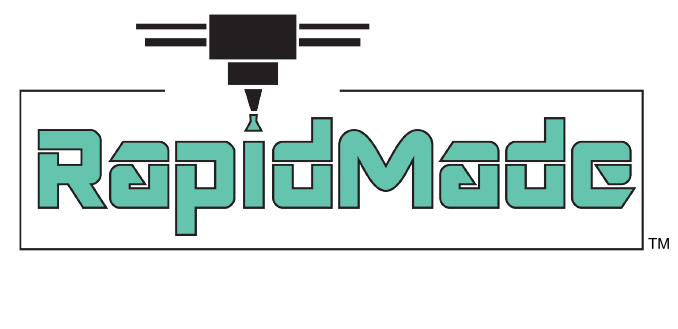3D Printing and Additive Manufacturing Glossary
The terms 3D printing and additive manufacturing are used interchangeably. They refer to a group of new technologies and processes that allow parts, models, and (in some cases) assemblies to be built three dimensionally.
Additive manufacturing is often best explained by how it differs from other types of production. Metal machining is a common and proven form of subtractive manufacturing: you start with a block of metal and cut away material until you are left with the desired design. Additive manufacturing, on the other hand, builds from a 3D model and only adds material where it is needed.
This is done by slicing a CAD modeled object into thin layers, sometimes as thin as 16 microns (0.0006in), and building each layer in succession. This unique manner of creating things allows for amazing new designs and geometries not previously possible with traditional manufacturing. For instance:
- Parts can now be made that have incredibly complex internal structures that cut out weight while maintaining structural integrity
- Many design constraints (like requiring draft and undercuts) that limit traditional manufacturing are obsolete
- Additively manufactured parts can be post-processed with traditional processes to improve functionality or aesthetics
- Original masters for traditional casting processes can be produced easily and quickly
- Interlocking parts can be created without the need for assembly
3D printing is currently a hot topic. It's a rapidly growing market expected to reach $20 billion by 2020. Deemed “The New Manufacturing Revolution” by The Economist and Wired, additive manufacturing will dramatically affect the way things are made in the near future. Some experts believe it will help reinvigorate American manufacturing, while others believe it will democratize production of goods and every house will have its own 3D printer.
Whatever the future holds, see the reverse side of this sheet for a brief glossary of terms that will help you navigate the worlds of additive manufacturing.
Common Acronyms
FDM: short for fused deposition modeling (tradmarked by Stratsys) and also known as fused filament fabrication (FFF). See: material extrusion, thermoplastic
SLS: short for selective laser sintering. See: powder bed fusion
DMLS: short for direct metal laser sintering. See: powder bed fusion
SLA: short for stereolithography apparatus. See: vat photopolymerization
Types of additive manufacturing
Vat photopolymerization: this process builds parts by using light to selectively cure layers of material in a vat of photopolymer.
Material jetting: this process builds parts by depositing small droplets of photopolymer (similar to an inkjet printer) which are then cured by exposure to light.
Binder jetting: this process creates objects by squirting a binding agent into a powdered material.
Material extrusion: this process creates objects by extruding thin filaments of thermoplastic to build layers. It is often likened to a tube of toothpaste or a syringe.
Powder bed fusion: this process selectively melts fine layers of powdered plastic or metal into solid objects using a laser.
Sheet lamination: this process builds parts by trimming sheets of material and binding them together in layers.
Directed energy deposition: This process builds or repairs parts by using focused thermal energy to fuse materials as they are deposited on a substrate.
Materials
thermoplastic: plastic that softens when heated and solidifies when cooled
photopolymer: a liquid plastic that hardens permanently when exposed to light
Common Materials
Material Strength Flexibility Surface Finish Feature Detail
Zcorp Composite1 ★★★☆☆☆ ★☆☆☆☆☆ ★★★☆☆☆ ★★★★☆☆
FDM Plastic ★★★★☆☆ ★★★☆☆☆ ★☆☆☆☆☆ ★★☆☆☆☆
Objet Plastic2 ★★☆☆☆☆ ★★★★★★ ★★★★★★ ★★★★★★
SLS Plastic ★★★★☆☆ ★★★★☆☆ ★★★☆☆☆ ★★★☆☆☆
Printed Metal ★★★★★☆ ★★☆☆☆☆ ★★☆☆☆☆ ★★☆☆☆☆
DMLS Metal ★★★★★★ ★★☆☆☆☆ ★★★☆☆☆ ★★★☆☆☆
SLA Plastic ★★★☆☆☆ ★★★☆☆☆ ★★★★☆☆ ★★★★☆☆
1 ZCorp printers are one of the few processes that can create colored objects and can even reproduce photographs and modeling textures
2 Objet can print rigid (Shore D) and soft (Shore A) materials, giving it a flexibility range up to the maximum


